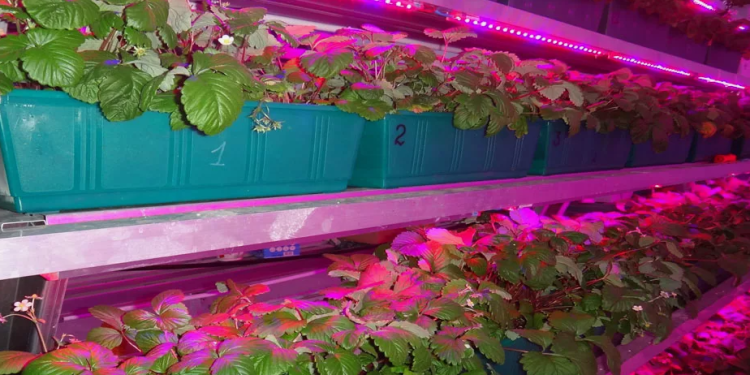#Agriculture #GreenhouseCultivation #LEDLighting #StrawberryProduction #CropQuality #SustainableFarming
In recent years, Canada’s strawberry industry has experienced a remarkable surge in both interest and production. Growers are increasingly turning to greenhouse cultivation methods to meet the ever-growing demand for year-round fresh fruit. According to Statistics Canada’s annual production report, more than 6.2 million pounds of greenhouse strawberries were produced in Canada in 2022, representing an additional 655,000 pounds compared to 2020. Sales of greenhouse strawberries also saw a significant uptick, increasing by 19.1 percent to $18.5 million in 2021 due to higher prices and increased production.
The movement toward greenhouse-grown strawberries is gaining momentum, with a focus on optimizing production and finding the best practices. Agronomists and scientists are exploring various factors that influence the quality and quantity of greenhouse strawberries. Environmental conditions, including lighting, humidity, and temperature, play a crucial role in successful production.
Lighting for Greenhouse-Grown Strawberries
Greenhouse strawberry production systems can vary, encompassing both soil-less media and soil-based systems. Growers have the flexibility to cultivate both June-bearing and day-neutral varieties in a greenhouse. However, environmental factors such as lighting are critical. Strawberry plants require a substantial amount of light, particularly during the early spring, late fall, and winter months when natural light is limited.
While supplemental lighting is common in greenhouses, traditional high-pressure sodium lights (HPS) have their limitations. HPS lights generate significant heat, limiting the intensity of light that can be applied to the plants. This limitation is a challenge for temperature-sensitive crops like strawberries.
Agronomists like Rose Séguin from Sollum Technologies suggest that using LED lights offers a solution. LED lights provide growers with the ability to increase light intensity, resulting in higher yields without the drawback of excess heat. For example, a grower who might use 120 micromoles with HPS lights could push intensity to 200 micromoles using LED lights, thereby boosting productivity without adding extra heat.
More light leads to increased activity in the leaves, resulting in enhanced sugar production and fruit yield. However, the impact of light can vary depending on the strawberry variety. As new varieties emerge, growers must adjust light recipes throughout the season to maximize plant potential.
Putting Lighting to the Test
Growers like the Savoura Group have been working with agronomists to fine-tune growing conditions. Savoura, spanning 40 hectares across 12 production sites in Québec, cultivates day-neutral strawberries among other crops. They use artificial light in some of their greenhouses to compensate for reduced natural light during the cold season. Dynamic LED lights have been implemented to increase yield and quality.
Dynamic LED lights, like those from Sollum Technologies, offer the advantage of modulating the entire spectrum of natural light with a unique artificial lighting recipe. This flexibility allows growers to adjust the lighting to meet specific plant needs, such as triggering flowering or preventing dormancy during the winter.
Growers have reported promising results under dynamic LED lighting. They have observed higher sugar levels in strawberries and improved fruit quality. Additionally, the adaptability of dynamic LEDs reduces stress on plants caused by sudden changes in light intensity, making it an energy-efficient option.
Future Success with LED Lighting
Beyond increased yields and improved fruit quality, research is ongoing to explore how LED lighting can mitigate threats like powdery mildew and other pathogens. This research aims to enhance plant resilience and reduce the percentage of affected fruit.
While mastering lighting conditions is vital, growers must remember that it’s just one piece of the puzzle. To achieve a healthy crop and maximize the benefits of lighting adjustments throughout the season, other fundamental factors like clean materials, optimal rootzone conditions, and an understanding of variety characteristics are equally important.
Dynamic LED lights are revolutionizing greenhouse strawberry cultivation, offering growers the ability to enhance quality and yield while maintaining optimal growing conditions. As the strawberry industry in Canada continues to thrive, the integration of innovative lighting solutions promises a brighter and more productive future for farmers and consumers alike.












